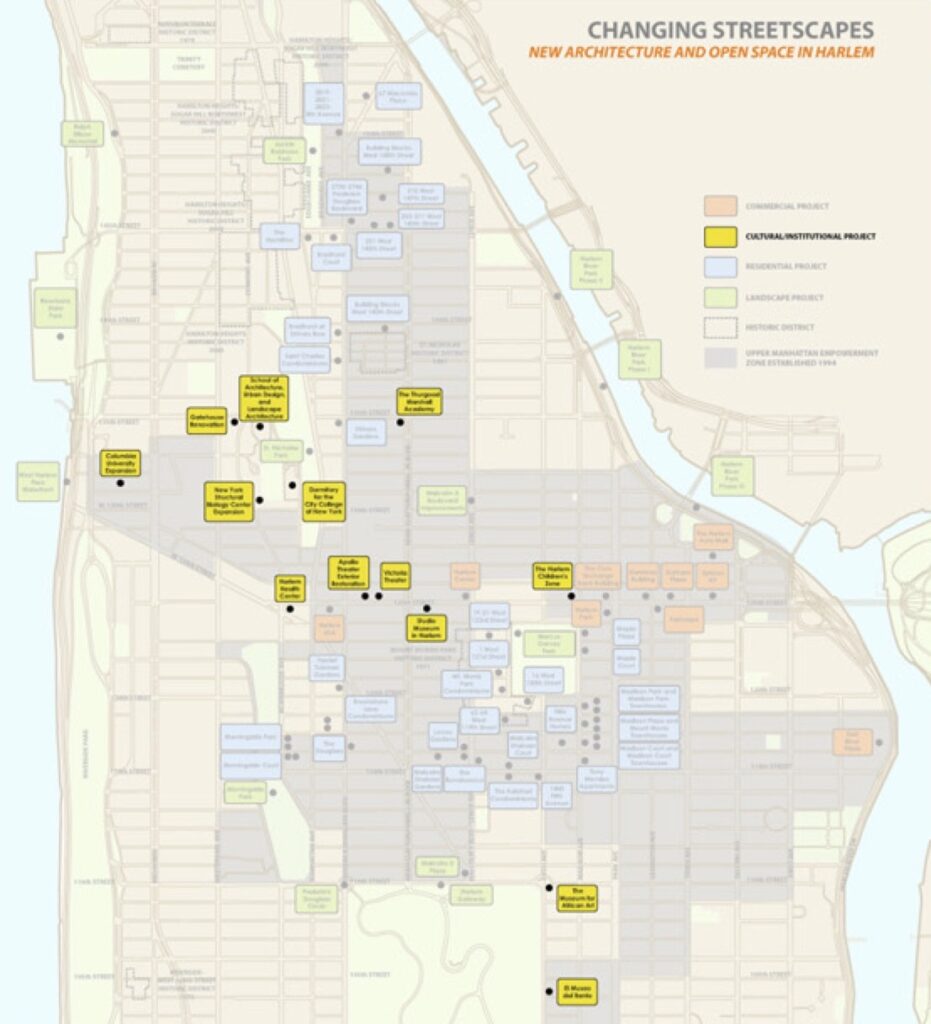
Accompanying the development in residential and commercial areas are noticeable changes in the institutional landscape. The first newly constructed public high school in Harlem in 50 years opened its doors in February 2004. The Thurgood Marshall Academy now stands where Small’s Paradise once welcomed jazz lovers at West 135th Street and Adam Clayton Powell, Jr. Boulevard.
Nonprofit groups are responsible for some of the most striking new architecture. Harlem Children’s Zone is a comprehensive social service organization that has built its new headquarters, which will include a charter school, at Madison Avenue and East 125th Street. The 10-story building offering a glassy facade to Hancock place at 125th Street and Morningside Avenue is devoted to health care for hotel and restaurant workers, provided by their unions.
Higher education is also expanding in Harlem. The City College of New York is home to four major projects, both new construction and adaptive reuse. “CCNY” will build its first dormitory in over 50 years, as well as a new, permanent home for its School of Architecture. Aaron Davis Hall is creating experimental performance and rehearsal space in the Old Croton Aqueduct gatehouse, and a consortium of scientific research institutions has sponsored a cuttingedge facility that continues to grow. Columbia University proposes a new performing arts center, part of its proposed planned expansion in Manhattanville in West Harlem.
Many cultural projects are planned as existing institutions grow and others seek a base in Harlem. A new home is planned for the Museum for African Art, temporarily housed in Long Island City. The Studio Museum in Harlem will complete its 10-year master plan of renovation and expansion, while El Museo del Barrio will undergo a facelift on Museum Mile. Work continues on restoration of the famed Apollo Theater. Just steps away on 125th Street developers are focused on the shuttered Victoria Theater, a long-time fixture in the cultural life of Harlem residents.


